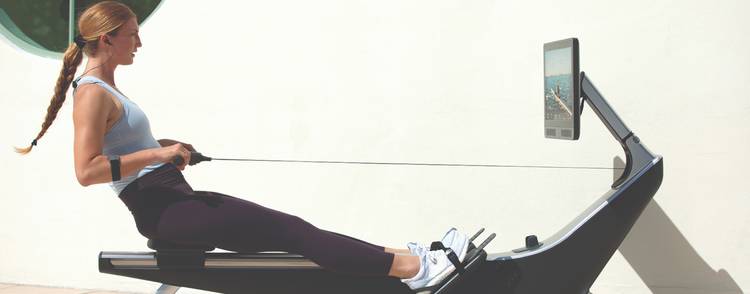Elliptical exercisers are part stair-climber, part cross-country-ski machine. Your feet move in flattened circles–an elliptical pattern. The workout value comes from resistance that slows the machine’s flywheel as you try to turn it.
A home elliptical trainer offers the convenience of not having to plan your workouts around the weather or off-peak hours at the gym. In a 65 percent increase from the year before, 3.3 million Americans regularly worked out on an elliptical exerciser in 2003. Ellipticals have caught on big for a number of reasons: The pedaling is easy on the joints (an advantage over treadmills); the exercise is weight-bearing and helps protect against osteoporosis (an advantage over bicycling and swimming); models with movable arms add a modest upper-body workout (an advantage over most treadmills and exercise bikes); and using an elliptical is easy (an advantage over cross-country-ski machines, which require a degree of finesse). What’s more, an elliptical lets you burn calories about as effectively as does a treadmill.
The effort to make exercise interesting and as pain-free as possible has led to an array of features. One useful device found on most ellipticals is electronic programming that automatically increases or decreases the workout’s intensity, the way running up and down real hills does outdoors. You can also make the adjustments manually. On the gimmicky side, a growing number of ellipticals load the console with gadgets such as fans, a CD player, and a cubbyhole for a TV remote.
The disappointing news from our most recent tests is that a number of machines had problems, from annoying “clunking” sounds to mechanical failures that seriously affected performance. Our findings also suggest that you get what you pay for, especially if you work out frequently. Ellipticals that cost $2,000 and up were well-built and felt stable to our testers, more like the $8,000 machines at gyms. And they were less likely to have defects.
HOW TO CHOOSE
First decide whether you want to devote the money and space to a big exercise machine. A living-room workout is the height of convenience, but of course, you can get fit exercising outdoors or at a gym. If you decide to buy an elliptical exerciser, consider these tips:
Try it out first. Every model is a little different, so you shouldn’t buy one before using it in the store. That’s especially important with elliptical exercisers because the movement is less familiar than walking or running, and each machine has a slightly different pedaling profile.
Decide which features you’ll use. Some, such as exercise programs, can make a workout more varied and less boring, which may get you on the machine more often. But don’t pay for frills you don’t care about.
Consider your space. Elliptical exercisers, most of which do not fold and are hard to move, take up as much floor space as a couch.
Make sure you can change your mind. Understand the store’s return policies. Make sure the store will let you bring the machine back if you dislike using it.


